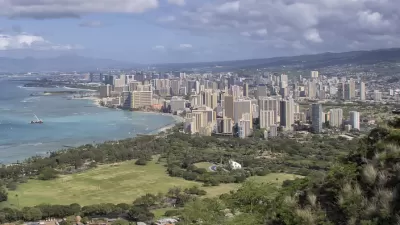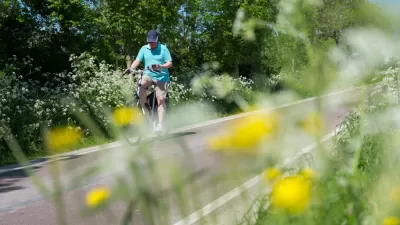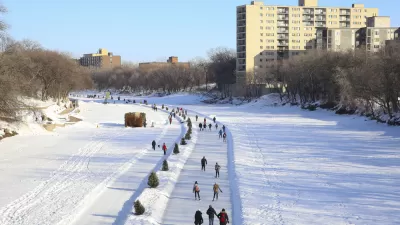A data-driven approach is needed to figure out how the disease has spread in the islands and what can be done to contain it.

In this editorial, Karl Kim, a professor of urban and regional planning at the University of Hawaii, critiques and expresses his frustration with the state's response to the pandemic. As Hawaii struggles to get a handle on the crisis, he makes the case for much more data-sharing and a more data-driven approach to tackle COVID-19.
Kim indicates that there is "a crisis of data, analysis, and risk management" and that there needs to be "a renewed call-to-arms for data scientists, modelers, geo-spatial and statistical analysts to study, map, and figure out how the disease has spread and what can be done to contain it."
He recommends five actions that would help the State of Hawaii do a better job in fighting the pandemic: (1) establish a data clearinghouse for current integrated COVID-19 test, contact tracing, hospitalization, and medical insurance claims data, (2) perform focused quick analyses on the behavioral and locational attributes of those infected and spreading the disease, (3) form interdisciplinary teams of researchers, statisticians, and data scientists who are funded to conduct risk analyses but also review, critique, and share analytical capabilities, (4) integrate mapping, modeling, and risk assessment with planning and decision-making, and (5) ensure widespread community engagement in all phases of data collection, analysis, implementation, and evaluation of mitigation strategies.
Kim knows a thing or two about disasters and ways to mitigate and recover from them. He has spent much of his career studying disasters, and he is the executive director of the Pacific Urban Resilience Lab and the National Disaster Preparedness Training Center.
FULL STORY: Poor data management worsens Hawaii’s COVID-19 crisis

Study: Maui’s Plan to Convert Vacation Rentals to Long-Term Housing Could Cause Nearly $1 Billion Economic Loss
The plan would reduce visitor accommodation by 25,% resulting in 1,900 jobs lost.

North Texas Transit Leaders Tout Benefits of TOD for Growing Region
At a summit focused on transit-oriented development, policymakers discussed how North Texas’ expanded light rail system can serve as a tool for economic growth.

Why Should We Subsidize Public Transportation?
Many public transit agencies face financial stress due to rising costs, declining fare revenue, and declining subsidies. Transit advocates must provide a strong business case for increasing public transit funding.

How to Make US Trains Faster
Changes to boarding platforms and a switch to electric trains could improve U.S. passenger rail service without the added cost of high-speed rail.

Columbia’s Revitalized ‘Loop’ Is a Hub for Local Entrepreneurs
A focus on small businesses is helping a commercial corridor in Columbia, Missouri thrive.

Invasive Insect Threatens Minnesota’s Ash Forests
The Emerald Ash Borer is a rapidly spreading invasive pest threatening Minnesota’s ash trees, and homeowners are encouraged to plant diverse replacement species, avoid moving ash firewood, and monitor for signs of infestation.
Urban Design for Planners 1: Software Tools
This six-course series explores essential urban design concepts using open source software and equips planners with the tools they need to participate fully in the urban design process.
Planning for Universal Design
Learn the tools for implementing Universal Design in planning regulations.
City of Santa Clarita
Ascent Environmental
Institute for Housing and Urban Development Studies (IHS)
City of Grandview
Harvard GSD Executive Education
Toledo-Lucas County Plan Commissions
Salt Lake City
NYU Wagner Graduate School of Public Service





























